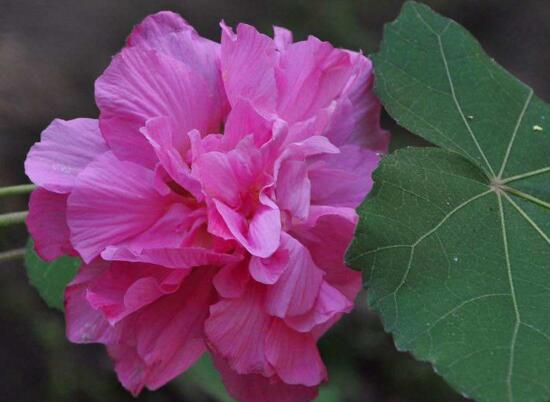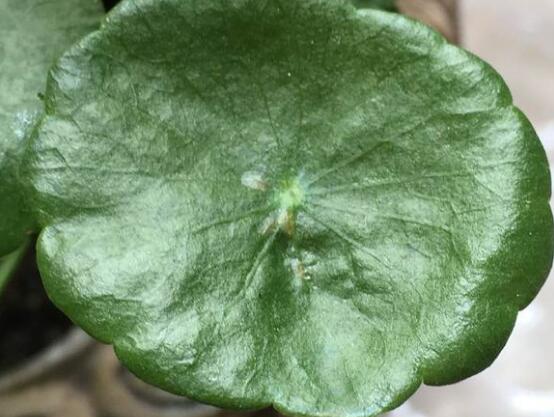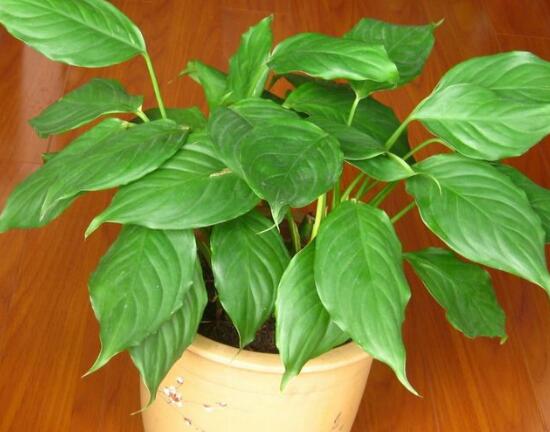What if the hibiscus flower has worms? the disease and pest control of the hibiscus flower.
Since ancient times, hibiscus flowers have been loved by people, and the word hibiscus has been badly used. Nowadays, many people keep hibiscus flowers at home, but in the process of maintenance, flower friends will encounter some problems, such as how hibiscus flowers reproduce and how hibiscus flowers grow worms. Different pest control methods are different, the following is the hibiscus flower disease and pest control methods arranged by Xiaobian, quickly go in and have a look.
1. What if the hibiscus flower has worms?

Hibiscus, the city flower of Chengdu, has a very good ornamental value. Not only that, the efficacy and role of hibiscus flower is also very amazing, its flowers, leaves can be used as medicine, with heat-clearing and detoxification, detumescence and pus, cool blood and stop bleeding. Although the effect is good, hibiscus flowers will also encounter the harm of diseases and insects in planting. What to do when hibiscus flowers grow bugs, recognize what insects are, and then pick up insecticides and spray it.
II. Disease and pest control of hibiscus flower
1. Red leaf mite
Red leaf mite is the most common pest of hibiscus flower. It propagates rapidly under good conditions and must be thoroughly controlled at the initial stage. The key is not to bring mites on seedlings into Honda.
Control methods: ① can be sprayed with 73% propargite 3000 times or 20% dimethyl ether EC 1000 times; at the initial stage of ②, mites usually live on the lower leaves that touch the ground, so removing the lower leaves, cleanliness and hygiene is also one of the important control measures of hibiscus flowers.
2. Powdery mildew
Powdery mildew is also one of the diseases and insect pests of hibiscus flowers, it mainly harms the leaves, symptoms: at first, there will be many small spots on the front of the leaves, slowly expanding into large powdery spots, and black-brown particles will be produced on the white powder after autumn. In severe cases, it will cause the leaves to turn yellow and wither, weakening the whole plant.
Prevention and treatment methods: the diseased plants found by ① should be burned in time; in the early stage of the onset of ②, 25% trimethoprim was sprayed with 2000 times, or 70% methyl topiramate wettable powder was sprayed with 1500 times.
3. Plutella xylostella
The newly hatched larvae clustered on the back of hibiscus leaves, feeding on the mesophyll and leaving only the upper epidermis, the third instar larvae fed separately, and the mature larvae formed cocoons and pupated on the back of the leaves. Before winter, the third instar larvae overwintered under the bark.
Control methods: ① scraped the overwintering larvae under the bark in winter; ② was sprayed with 20% permethrin EC 2500 times, or 20% fenvalerate 2500 times, or 90% trichlorfon 1000 times in the first and middle of June.
Small green leafhopper
When it comes to hibiscus flower diseases and insect pests, in addition to red leaf mites, there is also a small green leafhopper, the disease mainly harms leaves, symptoms: leaves appear white spots, serious will cause the whole leaf white and withered, no matter how serious it will affect the growth of the plant.
Control methods: ① removes weeds around the plant, destroys the overwintering place of diseases and pests, and reduces the population number of the second year; ② sprays 50% fenitrothion, 50% neathion, pyrethroid insecticides, or 50% malathion 1500 times of each 1500-fold solution at the peak of the first onset.
Daqing leafhopper
Adults and nymphs do harm by pricking and sucking juice on buds, leaves and twigs, causing branches to die gradually. Control methods: apply chemicals on the branches before the adults lay eggs at the end of September to prevent spawning. Spray 50% carbaryl 500 times or 2.5% deltamethrin 2000 times during the nymph damage period.
Cinnabar spider mite
In the early stage of the disease, the injured leaves showed small yellow-white spots, which slowly extended to the whole leaf, making it withered, curled and withered. Prevention and control method: spray 1500 times of omethoate on the back of the leaves for control.
Other insect pests of hibiscus flower
In addition to the above diseases and insect pests of hibiscus flowers, aphids, red spiders and shell insects are also harmed by hibiscus flowers. Simple control methods are as follows:
Shield scale: it can be sprayed twice with 80% dichlorvos EC 500 times 900 times or 50% fenitrothion EC 1000 times.
Aphids: you can use dimethoate or omethoate 1000-1500 times or 2.5% fish rattan essence 1000-1500 times, spray once every 7 days, 2 times 3 times.
Red spider: use 20% triclofenac 800x, triclofenac emulsion 2000 times, spray once every 7 days, 2 times 3 times.
III. Cultivation and management of hibiscus flower
Knowing the diseases and insect pests of hibiscus, we also need to pay attention to the cultivation and management of hibiscus. Weeding is needed once a year in summer and winter, and topdressing for 2-3 times. Hibiscus flower bud is very slow, should not be exposed to direct sunlight, the light conditions are suitable. Hibiscus resistant to pruning, can be trimmed according to the need to form, will be withered branches and leaves cut up to ensure light. It is necessary to pay attention to warm treatment in winter, and it is best to cultivate its plant shape into a shrub.
Pest control is a major lesson that the majority of flower friends need to learn, as long as we know the prevention and control methods, we can raise healthy and beautiful hibiscus flowers. The above is the hibiscus flower insects how to do, hibiscus flower pest control related content, hope that the above prevention and control methods can help everyone, wish everyone can raise healthy and beautiful hibiscus flowers.
How to deal with three common diseases and insect pests in the maintenance of succulent plants
Flower bonsai network guide: today, the flower bonsai network editor brings you an article on how to deal with the three common diseases and insect pests in the maintenance of succulent plants. Hibiscus snow lotus ranks first, let's take a look.
In the process of raising succulent plants, there are three situations that every succulent player should pay attention to, because each of these situations may cause succulent problems. These three situations are also encountered by every succulent player. I believe you may also encounter, because it is inevitable, but when we encounter, how should we deal with it? You can learn.
1, the situation of bacteria, I believe that many people in the process of raising succulent, more or less encountered the problem of succulent disease. Black rot, black spot and so on. All of this is possible, but do you know what caused it? Yeah, it's because of germs. Very often, when we water too much, or in a dark and humid environment, there will be a large number of bacteria and fungi. Cause pathological changes, the occurrence of succulent plants sick state, do not underestimate the morbidity caused by bacteria, may be irreparable. The solution, not too much watering, try to choose a place with plenty of light, if you encounter such a situation, you should choose to use the medicine at the first time. Completely kill the germs.
Here, I would like to focus on the fact that black rot is caused by fungi, and different plants have different black rot fungi. This kind of fungus can not only infect plants, but also parasitize in the soil. If you want to encounter black rot, you need to change the basin and soil. Plants need to be treated with medicine.
2, the situation of pest disaster, whether it is Xiao Hei Fei or scale insects belong to pest disaster. 100% of succulent players have experienced insect infestation. The impact on succulent plants is also very great. It can even cause succulent death. Some insects also lay eggs in the soil and even spread to other succulent conditions. It is best to choose an environment with plenty of sunshine. The solution is that if you find succulent worms, you need to change the basin and change the soil in time, and the best choice is to treat it with drugs. Completely kill the insects. Here we focus on scale insects, white insects, the size of sesame, with a layer of waxy shell on the surface and strong reproductive ability. It is contagious and has a high incidence period when the temperature and humidity are too high in summer. When you encounter scale insects, you need to change the basin and soil in time, and it is best to isolate a single succulent plant. It needs to be medicated.
3, fertilization, most succulent players choose nutrient soil, but for a long time, nutrient loss, succulent is no longer beautiful, at this time most people feel that there should be no state or environmental problems. In fact, the performance of succulent, may be that there are no nutrients. It is not that there is not enough light and no response to watering. It is caused by the lack of nutrients. There is soil consolidation, impermeable, will also cause succulent not beautiful, not spirit. Here focus on fertilizer, nitrogen fertilizer, can promote the growth of plant branches and leaves, luxuriant branches. The supplement of potash fertilizer can make the plant stem stout, the root system developed, and increase the lodging resistance. However, the best fertilizer choice is slow-release fertilizer, not too much, or it will burn roots.
Speaking of which, you may encounter all three of the above problems. I believe that you who raise succulent plants will think of your succulent diseases, worms and insufficient fertilizer when you see them. Although it is said that everyone can meet, there are still some meat friends who do not know the solution. If you are a novice, worried that encountered these problems can not be solved, and can not bear to watch the lovely succulent die, the editor recommends several super vitality succulent, super easy to raise.
Zi Zhi Lianhua, a variety I like very much, is small in groups and likes to burst pots. The foliage in the dormant period is very lovely. The flowers will die. If they grow buds, cut off the buds.
Sedum succulent plant seed holds lotus flower
¥4.80 for purchase
two。 Jade butterfly, like Ziji, is my favorite in the general merchandise, and some people say that it belongs to the relatively delicate variety in the general merchandise, but the price is not expensive, you can enter one if you like.
Jade butterfly imports succulent plants
Buy ¥5.00
3. The jade brocade of the rainbow, I have raised the jade of the rainbow, but I am more concerned about the jade brocade of the rainbow. The price of the rainbow jade brocade is not expensive, and it is more beautiful than the rainbow jade, so it is recommended to buy this. The leaves are easy to take root when they fall in the soil.
Rainbow jade succulent plant
¥5.40 for purchase
4. B female heart, easy to raise varieties, the leaves are very similar varieties have 8,000 generations, the following picture is B female heart, 8000 generations have wooden poles, generally the leaf tip will not turn red, but the color of my second heart is not as jelly as the picture below, a little smoky green, not so pretty.
Potted plants with succulent plants
¥5.04 for purchase
5. Purple pearl, this variety I have not raised, but look at the state of the color is relatively purple, not the state of the color is general, not very good-looking, belongs to the general goods, not difficult to raise.
Zizhen, a succulent plant
¥2.90 for purchase
6. Meat friends affectionately known as "Chihuahua", because the leaf tip red quite drunk imperial concubine charm, also known as "Yang Guifei". The appearance full of vitality is lovable and worth starting with! Spring and autumn to give enough water on the line ~ but Chihuahua is a dormant variety in summer, summer is the need to pay attention to water control, and need to put bright no direct light ventilation place for maintenance.
The succulent plant crassulaceae Chihuahua
¥7.20 for purchase
These succulent plants are very easy to raise, very suitable for novice breeding, if you are afraid to encounter the above three problems, choose these succulent plants is still very good.
Five management methods of potted flowers in early winter this winter feels particularly early, the leaves on the trees turn yellow slightly, and the wind can't stop blowing, and it's a little unnaturally cold. Although we don't have snow here, I still feel the pace of winter. Early winter is a critical period for nutrition accumulation and flower bud differentiation of potted flowers. however, most potted plants can not stand the cold and frost in winter and are easy to die in winter. the management at this time directly affects the ability of flowers to survive the winter and bloom the following year. The following introduces the winter management methods of potted flowers: 1. Cold prevention: it is necessary to determine the appropriate entry time according to the growth habits of flowers and the demand for temperature. Dormant flowers in winter, such as rose, pomegranate and lotus should be placed indoors from 3 ℃ to 5 ℃; semi-dormant flowers in winter, such as sweet-scented osmanthus, gardenia and camellia, should be placed in a cold greenhouse above 5 ℃; flowers that continue to grow in winter, such as crabapple and carnation, should be placed in a greenhouse of 8 ℃ to 10 ℃ to survive the winter safely. Now many people like to build the courtyard into the style of Southeast Asia, in the plant configuration with tall palm trees with low shrubs, such as palm trees, oleander, Ye Zihua, Fusang, variable leaf trees, pineapples and other Southeast Asian plants are less hardy, winter conservation should be strengthened, should be placed in a place with a suitable temperature to survive the winter. two。 Fertilization: timely fertilization of flowers, basin soil drought should be irrigated in time. In addition, it can be combined with spraying for extra-root topdressing to supplement flower nutrition. The commonly used topdressing is 0.5% urea, 1% calcium superphosphate and 0.3% potassium sulfate. 3. Pruning: rose, Fusang, poinsettia, hibiscus, kumquat, generation flowers and other flowers that bloom on the branches of the current year should be pruned during the winter dormancy period to promote their multiple shoots, flowers and fruits; perennial vines and flowers, cutting off dense branches, overlapping branches and branches of diseases and insect pests; shrubs with ornamental branches, such as red rosewood, choose the new shoots close to the backbone branches to make them produce new branches. 4. Loose soil: poor ventilation will hinder respiration, affect the normal growth and even death of flowers. The soil should be loosened in time to keep the basin soil loose. 5. Diseases and insect pests: in early winter, when the temperature decreases, the activities of diseases and insect pests decrease, but they should also be prevented and controlled in time. Although the winter is relatively cold, it is not the time for mosquitoes to lay eggs and breed, but there will still be insects parasitic on plants to spend the winter, so it is necessary to strengthen management. Emphasis should be placed on the prevention and control of diseases and insect pests such as leaf perforation, aphids, red spiders and leaf moths. Generally, we can choose 50% carbendazim 800 times solution plus 40% dimethoate EC 1500 times liquid, or 50% carbendazim wettable powder 600 times liquid plus 40% isocarbophos 1000 times solution and other medicament control. In order to make the garden potted flowers safely through this cold winter, we should take good care of our own flowers as well as ourselves. As long as we do the above, the flowers in the courtyard will bloom more brightly in the coming spring.
- Prev

What to do with the long worms of Artemisia angustifolia? a complete collection of prevention and control methods of diseases and insect pests
As people pay more and more attention to their health, many people begin to raise small plants at home, and because the efficacy of money grass is amazing, raising money grass has become a good choice. However, in the process of raising Artemisia angustifolia, diseases and insect pests cannot be escaped, so what about the worms? To this
- Next

How to prune, re-cut and transplant (properly trim and grow new branches and leaves) when the evergreen grows taller
Evergreen is a very easy to raise green plants, evergreen leaves are green all the year round, placed at home is a good choice. Pruning is inseparable from growing plants, especially evergreen. Evergreen, if you don't build it, it will be very ugly, like a pot of weeds.
Related
- Fuxing push coffee new agricultural production and marketing class: lack of small-scale processing plants
- Jujube rice field leisure farm deep ploughing Yilan for five years to create a space for organic food and play
- Nongyu Farm-A trial of organic papaya for brave women with advanced technology
- Four points for attention in the prevention and control of diseases and insect pests of edible fungi
- How to add nutrient solution to Edible Fungi
- Is there any good way to control edible fungus mites?
- Open Inoculation Technology of Edible Fungi
- Is there any clever way to use fertilizer for edible fungus in winter?
- What agents are used to kill the pathogens of edible fungi in the mushroom shed?
- Rapid drying of Edible Fungi

